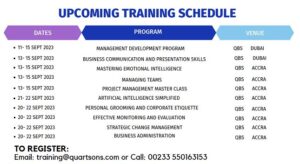…Crafting a culture of efficiency and engagement
Picture this: you walk into a conference room bathed in the sterile glow of fluorescent lights. The air is heavy with a sense of resignation as you take your seat alongside your colleagues. The clock ticks, and yet, it’s not time to begin because a significant portion of the attendees has yet to arrive. The room is devoid of any agenda, and even if there were one, it’s clear that no one would adhere to it. Some participants stare blankly ahead, while others find solace in their smartphones, their minds far removed from the drudgery of the meeting at hand.
In the modern workplace, this disheartening scenario plays out far too frequently. Meetings, meant to be the lifeblood of organizational objectives, often turn into enigmatic gatherings of disinterest and inefficiency. In this article, we will delve into the disheartening statistics surrounding these gatherings, revealing the pressing issue that plagues organizations worldwide: the poorly managed meeting.
Meetings: A statistic quagmire
Statistics paint a sobering picture of the pervasive meeting culture in modern workplaces. Middle managers spend a staggering 35% of their working hours in meetings, while upper management dedicates an alarming 50% of their time to meetings. In a week, the average employee attends at least eight meetings. As seniority rises, so does the number of meetings, culminating in a mind-boggling 17 meetings per week for VPs, directors, and C-level executives.
But here’s the startling truth – despite the considerable time invested, many meetings fail to deliver value. Only a dismal 17% of executives believe their meetings are productive and valuable. This inefficiency arises from a lack of planning and preparation, with a whopping 63% of meetings lacking a set agenda, and 37% having no agenda whatsoever.
The cost of ineffective meetings
A study by Bain & Company underscores the high cost of inefficient meetings. It reveals that 15% of an organization’s collective time is spent in meetings, and shockingly, half of these meetings are deemed unnecessary. This translates to a significant drain on an organization’s time and resources, diverting them from activities that contribute to the bottom line.
The consequences of poor meetings extend beyond wasted hours. A survey by Salary.com indicates that 47% of employees consider meetings the biggest time-wasting culprits at work. The effects of unproductive meetings are palpable in employee engagement, as 39% of respondents admitted to dozing off during meetings, and a staggering 91% confessed to daydreaming.
Meetings serve as the lifeblood of an organization, akin to the circulatory system within the human body. They are the vital vessels through which organizational objectives flow, much like blood coursing through veins, nourishing every department and aspect of the organizational body. When managed effectively, meetings ensure the seamless transmission of information, enabling the coordinated execution of tasks and the tracking of progress. However, when poorly managed, they become the equivalent of clogged arteries, impeding the flow of productivity, causing stagnation, and sapping the organization’s vitality, much like a sluggish circulatory system affects the functioning of the human body.
Where the traditional meeting room setup often leads to inefficiency, disengagement, and frustration, forward-thinking organizations are embracing novel approaches to revolutionize the way they conduct meetings. These innovative practices challenge the status quo, infusing creativity, productivity, and engagement into the heart of their business interactions.
Here are 7 innovative practices and strategies to consider:
- Stand-Up Meetings (Daily Huddles): Some organizations, inspired by agile methodologies, conduct daily stand-up meetings, also known as huddles. These meetings are usually short, lasting no more than 15 minutes, and are designed to quickly update team members on progress, challenges, and priorities. The act of standing encourages brevity and keeps participants engaged.
- Walking Meetings: To promote both physical activity and creativity, some leaders have adopted walking meetings. Instead of sitting in a conference room, participants take a stroll outdoors while discussing business matters. Walking meetings can help break down barriers and encourage more open communication.
- Silent Meetings: Silent meetings incorporate a period of reflection or silent brainstorming before any verbal discussion. Participants write down their thoughts or ideas individually before sharing them aloud. This approach can lead to more thoughtful contributions and prevent dominant voices from overshadowing others.
- Meeting-Free Days: Companies like Asana and Atlassian have designated specific days of the week as “meeting-free” to give employees uninterrupted time for focused work. This practice acknowledges the need for undistracted work and deep thinking.
- Speed Meetings: Inspired by speed dating, speed meetings involve short, structured interactions between team members. Participants quickly discuss specific topics or projects, encouraging rapid information exchange and networking.
- Technology Tools: Innovative meeting management software and tools have emerged to streamline the meeting process. These tools help create agendas, automate follow-ups, and provide analytics on meeting effectiveness. Examples include Fellow, Hugo, and Soapbox.
- PechaKucha Presentations: PechaKucha is a presentation style that involves showing 20 slides, each for 20 seconds. This forces presenters to be concise and engaging, making it suitable for meetings with multiple presentations or updates.
In the fiercely competitive landscape of modern business, where every advantage counts, effective meetings emerge as the unsung game changer. While many organizations focus on product innovations, marketing strategies, and cost optimizations, the transformative potential of well-structured and purpose-driven meetings often goes overlooked. Yet, it is in these gatherings that teams align, ideas flourish, and strategies are forged.
Effective meetings are not mere obligations but powerful tools that can sharpen a company’s competitive edge. They foster alignment, drive innovation, and facilitate informed decision-making, ultimately positioning businesses to outpace their rivals in an ever-evolving marketplace. In a world where time is precious and resources are limited, mastering the art of meetings can be the key to gaining the edge over the competition.
The Way Forward: Effective Meeting Management
Clearly, the prevalence of poorly managed meetings is a pressing issue that organizations must address. To turn the tide and ensure meetings become valuable assets rather than time sinks, several strategies can be employed:
- Set Clear Objectives: Every meeting should have a well-defined purpose and objectives. This ensures that participants understand what needs to be achieved.
- Establish Agendas: A structured agenda with time allocations for each item keeps discussions focused and on track.
- Prioritize Attendance: Invite only those who are directly involved or crucial to the meeting’s outcomes, reducing the risk of overcrowded and unproductive gatherings.
- Effective Facilitation: Appoint a skilled facilitator to guide discussions, manage time, and ensure participation from all attendees.
- Actionable Outcomes: Document action items, decisions, and responsibilities during the meeting, and follow up promptly with meeting minutes.
- Leverage Technology: Utilize collaborative tools for sharing documents and maintaining a central repository for meeting materials, especially in the age of remote work.
- Timebox Management: Implement a timeboxing strategy to allocate specific time limits to each agenda item. This practice encourages participants to focus on essential topics and prevents discussions from veering off course. When time is efficiently managed, meetings become more productive, and participants are more likely to stay engaged, knowing that their time is respected and well-utilized.
Meetings are indeed essential for organizations to align, communicate, and drive progress. However, when mismanaged, they can turn into formidable obstacles to productivity. The statistics tell a grim story, but they also illuminate the path forward. By adopting best practices for meeting management and fostering a culture of efficiency and engagement, organizations can transform meetings from a liability into a potent tool for achieving their objectives. The future of work demands nothing less than a revolution in how we meet, ensuring that every minute spent in the conference room is a minute invested in the organization’s success.











